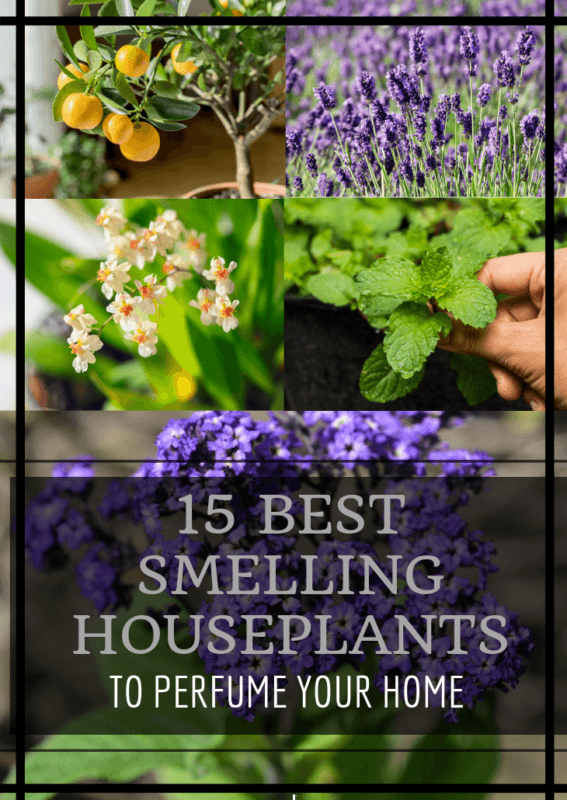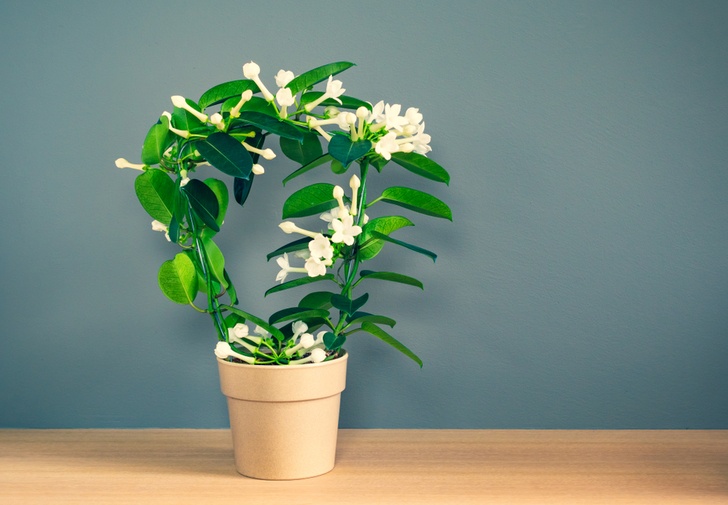
Plants do so much for us and ask for so little in return. Simply being in their presence confers a broad range of benefits – when we are around them the air is cleaner and more humid, we are happier and less stressed, we work harder and more effectively, and we heal faster and feel less pain.
Indeed, we are wise to keep these living greens close by. Not only do they add beauty and lushness to your indoor spaces, choosing fragrant varieties means they can also take the place of artificial air fresheners too.
Here we’ve rounded up the most aromatic plants that adapt well to life indoors.
1. Lemon Balm (Melissa officinalis)
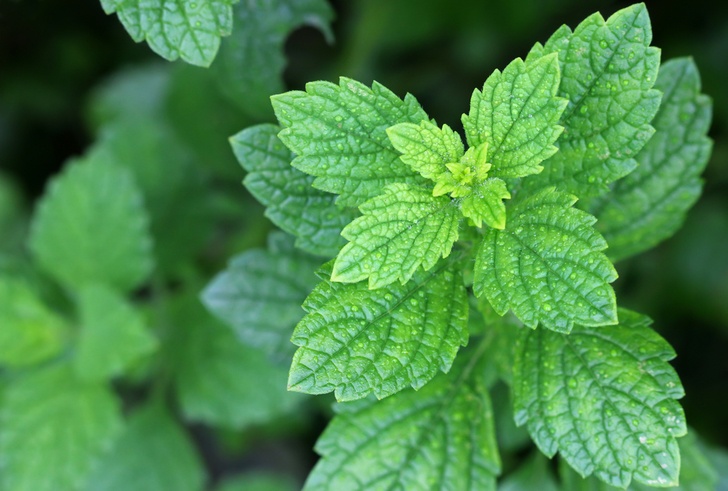
Lemon balm is a bushy, perennial herb of the mint family. Though humble in appearance, when lemon balm’s serrate, oval leaves are lightly brushed or rubbed between the fingertips, it releases a fragrant lemony scent.
Beyond its aromatic properties, lemon balm is an eminently useful specimen to have around. Clip the leaves often to flavor soups, salads, sauces and ice cream. You may also steep the leaves to make lemon balm tea, a therapeutic beverage for lifting mood, improving sleep, relieving pain, and more.
As a houseplant, lemon balm is easy to grow and very low maintenance. Place it on a window ledge that receives up to 5 hours of direct sunlight each day.
Pick up organic, non-GMO lemon balm seeds here.
2. English Lavender (Lavandula angustifolia)
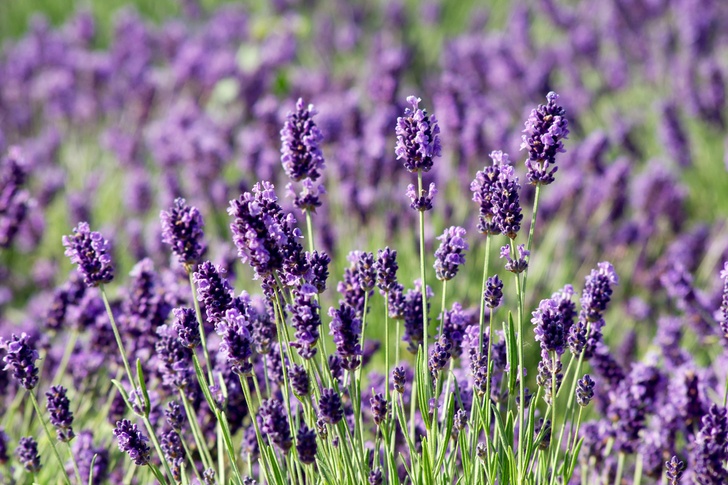
The purple spiked plant beloved by natural health enthusiasts, lavender is another herb with dozens of wonderful benefits for health and home.
Though there are several types to choose from, English lavender is one of the more aromatic varieties. Keep it blooming by providing lots of sunlight and good air flow. It also prefers a spacious pot with a couple inches between plantings and monthly feedings.
Heirloom organic English lavender seeds can be purchased here.
3. White Jasmine (Jasminum polyanthum)
A twining vine that produces clusters of star-shaped flowers, white jasmine provides the sweet smell of summer during the winter months. It is also known as pink jasmine or many flowered jasmine.
Keep white jasmine happy by placing it in a sunny, humid spot. It looks lovely in a pot or hanging basket, just be sure to add a stake or trellis so its clinging vines have something to grasp on to.
Purchase white jasmine starter plants here.
4. Gardenia (Gardenia jasminoides)
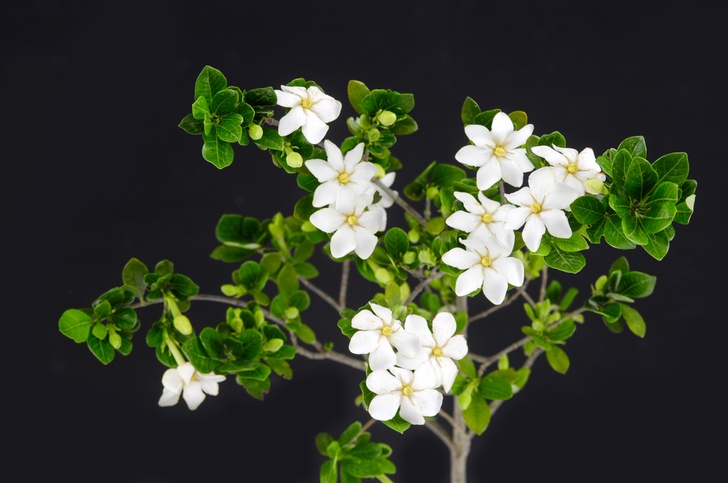
Although it made our short list of the worst plants to grow in your garden, gardenia might be tough but she sure is beautiful. If you are up to the challenge, this gorgeous diva just might reward you with a show of exquisite, sweetly fragrant blooms.
Gardenia requires bright, indirect light and temperatures above 60°F at all times. It prefers acidic soil, bi-weekly feedings, and a consistently moist growing medium.
A 2-pack of live gardenia plants can be purchased here.
5. Citrus Tree (Citrus spp.)
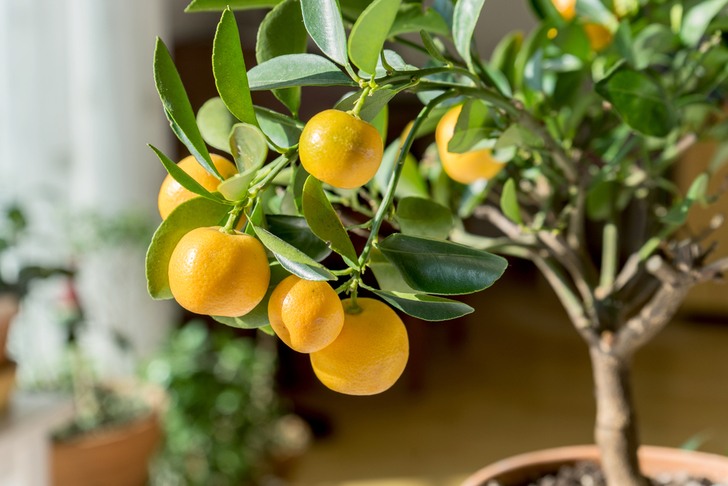
Lemon, lime, orange, and other citrus fruit plants can add fruity scents to your indoor garden. Dwarfed into miniature trees, citrus needs sunshine and warmth to produce small fragrant blossoms that smell like their fruit.
Citrus plants tend to be thirsty so give them a good watering regularly and feed with an all-purpose fertilizer in spring and summer.
While you can grow citrus plants from seed, you will have to wait around six years for it to mature enough to bloom. If you don’t want to wait that long, pick up a 3-pack of orange, lime, and lemon starter plugs here.
6. Twinkle Orchid (Oncidium)
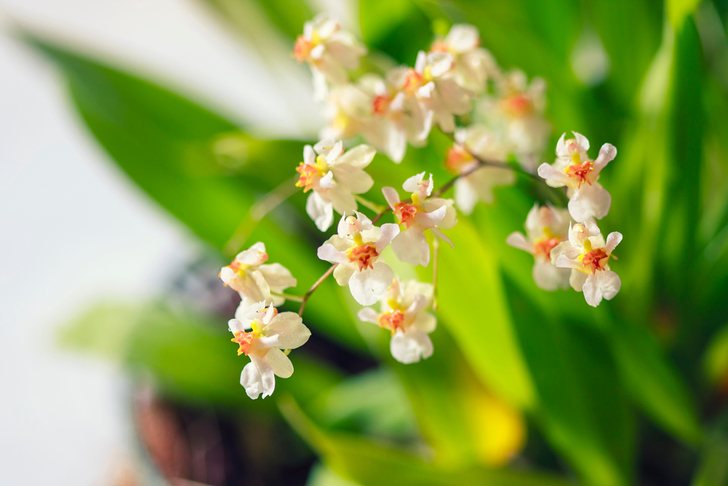
Though orchids in general are not known for their fragrance, this Oncidium hybrid blooms with hundreds of dime-sized flowers that emit a spicy vanilla scent.
Despite their reputation, orchid species aren’t too difficult to care for provided you give them plenty of bright, indirect light. Choose a spot with high humidity and temperatures between 70 to 85°F during the day and 55 to 65° at night. Because twinkle orchids are epiphytes, pot them in an orchid mix of fir bark and peat moss.
Purchase Twinkle Orchid ‘Fragrant Fantasy’ here.
7. Scented Leaf Geranium (Pelargonium spp.)
Though scented geraniums bear delicate 5-petaled flowers in summer, their strong fragrance is released when the thick, fuzzy foliage is touched or rubbed.
It comes in several scents – P. capitatum (rose), P. crispum (lemon), P. denticulatum (pine), P. fragrans (apple), P. grossularoides (coconut), P. tomentosum (chocolate mint).
Whatever variety you choose, place scented geranium in a sunny spot that receives at least five hours of sunlight per day.
Pick up rose scented geranium seeds here.
8. Stephanotis (Marsdenia floribunda)
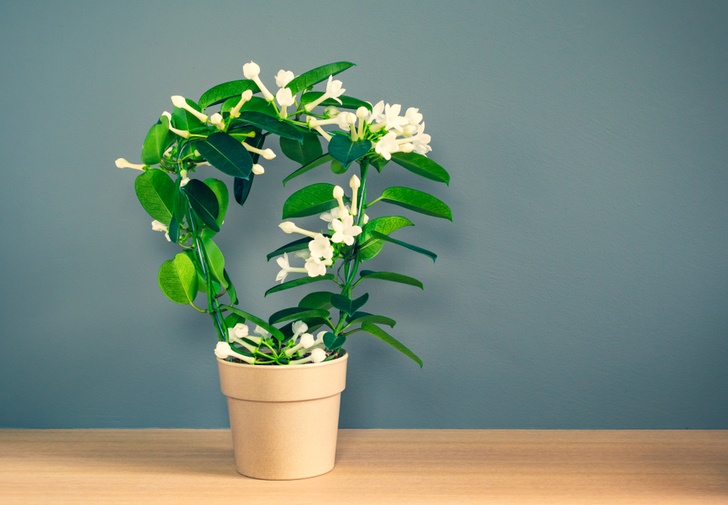
With attractive dark green leaves that look good no matter the season, stephanotis is a vining plant that produces clusters of waxy, sweet smelling flowers in spring and summer.
As one of the easier to grow indoor flowering plants, stephanotis just needs a good amount of bright light and a support to climb on.
Live stephanotis plants can be purchased here.
9. Eucalyptus Tree (Eucalyptus cinerea)
Also known as silver dollar tree and argyle apple, eucalyptus emits a minty, sweet, and uplifting aroma. The silvery, blue-green foliage also provides a nice visual contrast among the pure greens of other houseplants.
Eucalyptus plants are incredibly speedy growers, maturing from seed to shrub in a single growing season. Indoors, they can be pruned into a bushy form or trained to look like a tree. Being native to Australia, it needs full sun to thrive. Feed weekly throughout spring and summer with a low nitrogen fertilizer.
Buy eucalyptus seeds here.
10. Sweet Bay (Laurus nobilis)
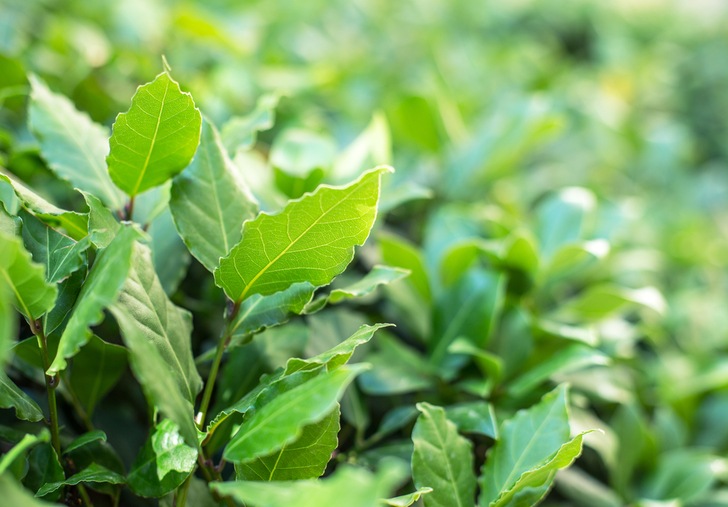
Sweet bay is a non-fussy evergreen tree with thick, glossy, elliptical leaves. Its foliage gives off an herbal scent with slight floral notes. Clip off the leaves from time to time to add flavor to soups, sauces, and stews.
Place sweet bay plants in a spot that receives full sun to part shade.
Buy sweet bay live plants here.
11. Tea Rose Begonia (Begonia ‘Tea Rose’)
A fibrous begonia, this tea rose cultivar features broad green leaves and ever blooming pinkish white flowers that appear along its red stem. Blooms are fragrant with a lightly sweet aroma.
Tea rose begonia prefers medium to bright light when kept indoors, high humidity, and warm temperatures.
Pick up tea rose begonia plants here.
12. Heliotrope (Heliotropium arborescens)
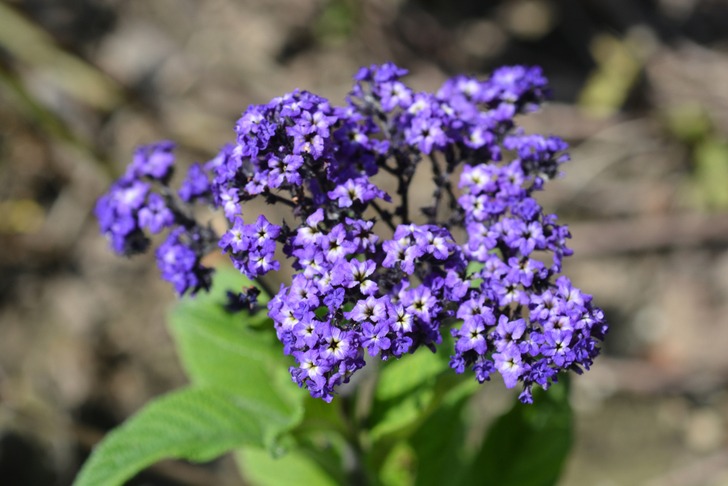
Bearing tiny violet flowers grouped together in large clusters, heliotrope is a delightful specimen that smells of vanilla. Although heliotrope is typically planted outdoors, it can be tamed for your indoor garden as long as you provide plenty of sunlight and humidity. Deadhead spent blooms to encourage more flowers.
Heliotrope seeds can be purchased here.
13. Angel’s Trumpet (Brugmansia x candida)
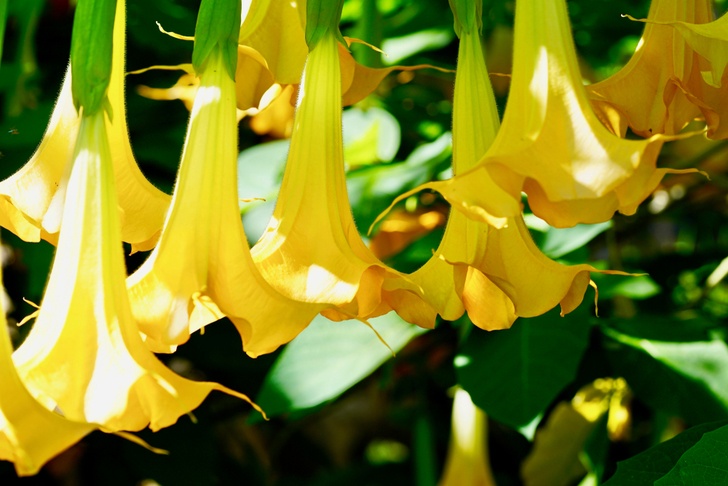
Fill your home with the intoxicating perfume of angel’s trumpet, a large tropical tree native to Ecuador. Releasing its scent in the evenings, angel’s trumpet has numerous, huge, downward facing trumpet-shaped flowers that are available in white, yellow, orange, and pink colors. But beware, all parts of this plant are highly toxic.
To keep it in bloom, angel’s trumpet needs as much sunlight as you can throw at it, warm temperatures, and plenty of ambient humidity.
Purchase 4-inch angel’s trumpet starter plants here.
14. Frangipani (Plumeria spp.)
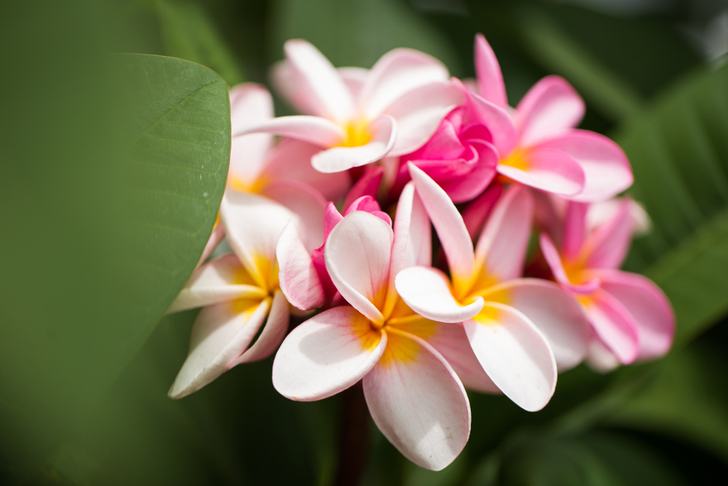
Frangipani is a small tree native to Mexico, Hawaii, Central American, and the Caribbean. It is most well known as the flower used to make leis. The five-petal blooms – available in red, pink, yellow, and white hues – are incredibly fragrant, especially at night.
To keep frangipani as a houseplant, you’ll need to give it lots of bright, direct sunlight (at least 4 to 6 hours per day). Water the plant deeply but allow the soil to dry out between waterings. Encourage blooming by feeding with a high phosphorus fertilizer every two weeks.
A set of four frangipani cuttings can be purchased here.
15. Blue Passionflower (Passiflora caerulea)
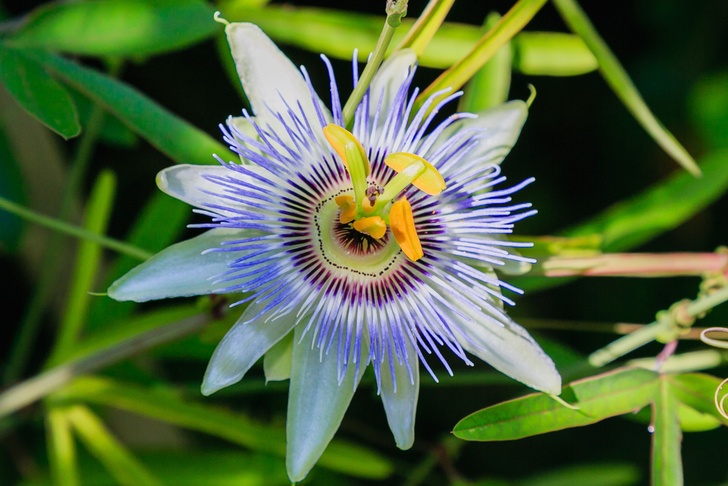
An absolute show stopper, blue passionflower offers a mesmerizing display of colorful sepals, petals, filaments, stamens, and stigmas. Beyond its complex appearance, blue passionflower emits a minty, fruity aroma.
Since blue passionflower is a woody vine, it needs a cage or hoop support to keep it tidy. It also prefers a spacious pot for its roots to become well established. Blue passionflower loves the sun, high humidity, and household temperature ranges.
Live blue passionflower starter plants can be purchased here.
Encouraging Houseplants to Flower
Some houseplants are more stubborn than others when it comes to flowering. The only way to see those marvellous blooms year after year is to recreate their natural environment as best you can.
Here are a few tips:
Lighting – Some plants require more light than your sunniest window sill, especially if you live in the northern hemisphere. Supplement their sunlight needs by adding a grow light or two.
Humidity – To increase humidity levels in the home, place pebble trays beneath your planters. You can also give their foliage a daily spritz with plain water. Investing in a humidifier, grouping houseplants closely together, or setting them in a terrarium are other ways to keep tropical plants happy.
Repotting – Flowering takes up a lot of the plant’s energy. Replenish their nutrients by repotting plants in new potting soil every year.
Put them out – Consider setting plants outside during the summer months to give them a major boost of growth. Just be sure to bring them back inside before the temperature drops.
Pin This For Later
